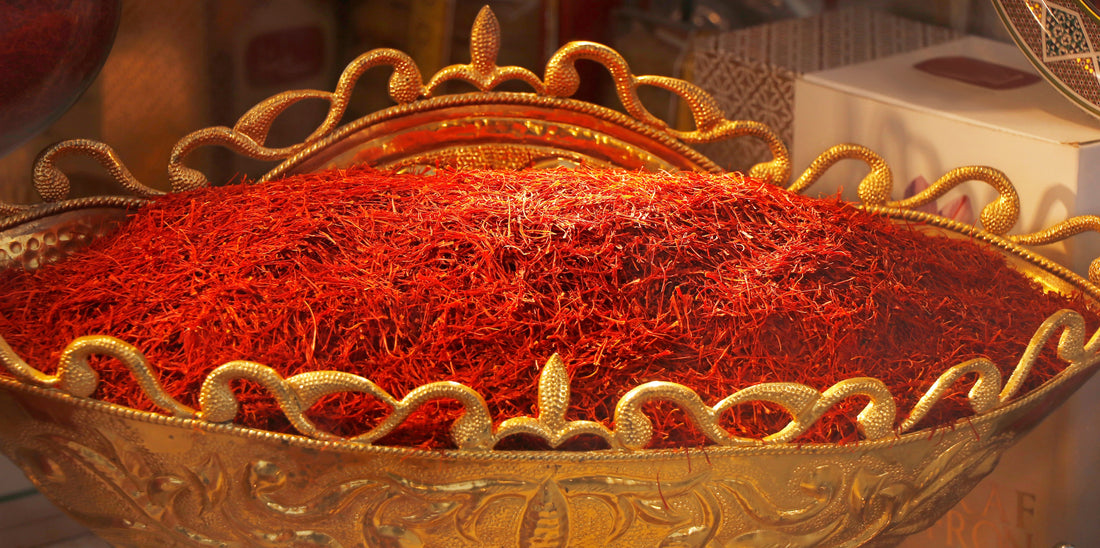
The luxury and quality of saffron
Share
No spice embodies luxury quite like saffron. For over 3,000 years, this delicate and fragrant spice has graced royal feasts, adding vibrant color and rich aroma to cuisines across the globe. From Spanish paella to Indian curries and Moorish stews, saffron’s unique character has made it a prized ingredient in many culinary traditions.
Saffron is derived from the saffron crocus (Crocus sativus), a beautiful purple flower cultivated mainly in Iran, India, Spain, and the Netherlands. Due to its fragile nature, harvesting is done by hand, typically early in the morning when the flowers are freshest. Each flower contains three red stigmas, which are carefully extracted and dried to create the spice known as saffron. Only the deep red portion of the stigmas holds value, as it is responsible for saffron’s intense flavor, color, and aroma.
Why is saffron so expensive?
The meticulous and labor-intensive harvesting process makes saffron the most expensive spice in the world, often referred to as “Red Gold.” To produce just one kilogram of saffron, around 100,000 to 150,000 flowers are needed. The delicate process of drying and toasting the stigmas requires precise timing, as even the slightest oversight can result in loss of quality, making saffron worth thousands of dollars per kilogram.
With an annual global production of approximately 20 tonnes, saffron remains a rare and valuable commodity. Its price can reach up to €8,000 per kilogram, making it a luxury ingredient that must be used sparingly. Fortunately, only a tiny amount of saffron is needed to impart its signature flavor and color to dishes.
Ensuring the best quality saffron
Due to its high price, saffron is often subject to adulteration. Some suppliers mix saffron with safflower or turmeric to enhance its color, making it essential for consumers to be vigilant when purchasing this precious spice. Here are some key indicators to ensure you’re buying the best quality saffron:
- High-quality bulbs – Only top-grade Crocus Sativus bulbs ensure the best saffron;
- Deep red color – Darker, uniform red threads signal superior quality;
- Long, unbroken threads – Whole, uncut strands are a mark of purity;
- Strong aroma – A rich, honey-like scent with earthy undertones;
- Bitter yet sweet taste – A balanced mix of bitterness and subtle sweetness;
- Slowly dissolves in water – Releases a deep golden color, not instantly;
- No yellow or white parts – Only red stigma; no mixed flower parts;
- Aging enhances flavor – Properly stored saffron intensifies over time;
- Health benefits – Known to boost mood, memory, and overall well-being;
-
Lightweight but potent – A little goes a long way in flavor and color;
- No artificial dye – Pure saffron doesn’t stain fingers instantly.
Culinary uses of saffron
Saffron is known for its warm, earthy, and slightly bitter taste, accompanied by a distinctive aroma. When added to food or liquids, it releases a beautiful yellow-orange color, enhancing both the visual appeal and flavor of dishes.
Because saffron is incredibly potent, only a small quantity is needed. Generally, three threads per person are sufficient for most recipes. Using too much saffron can overpower the dish, making it overly aromatic and intense.
Conclusion
Saffron is a spice of unmatched luxury, bringing depth, aroma, and color to countless dishes. While its price is steep, its potency ensures that a little goes a long way. By choosing high-quality saffron and using it correctly, you can enjoy its exquisite taste and numerous benefits, making every dish a true culinary masterpiece.

1 comment
I want to use it dailyly. I’m 78 years old. What is the dosage for a momen my age